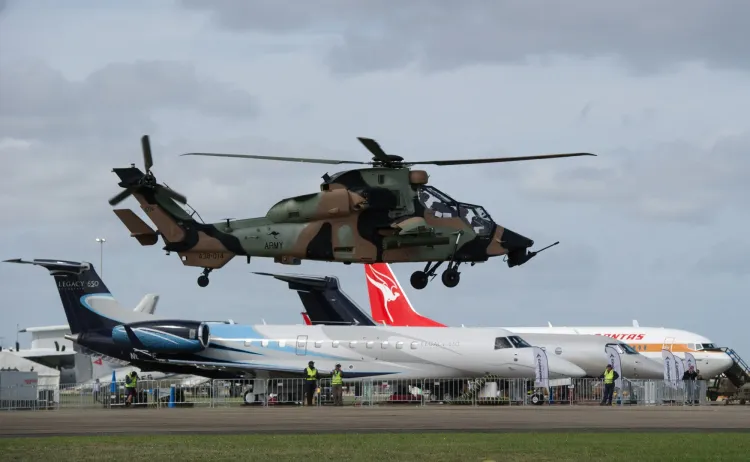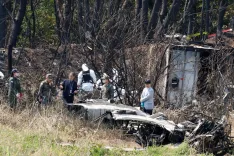What Caused the 2023 Fatal Australian Army Helicopter Crash?

Synopsis
Discover the critical findings of the investigation into the 2023 Australian army helicopter crash that claimed the lives of four soldiers. Learn about the pilot's disorientation and the factors leading to this tragic incident.
Key Takeaways
- Four soldiers tragically lost their lives in the helicopter crash.
- The crash was due to pilot disorientation.
- Fatigue and poor conditions played a significant role in the incident.
- The Department of Defence has accepted all 46 recommendations made in the report.
- This investigation is one of the most complex in recent military history.
Canberra, May 21 (NationPress) An investigation has revealed that the tragic crash of an Australian army helicopter in 2023, which resulted in the deaths of four soldiers, was due to the pilot's disorientation. The Department of Defence released the aviation safety investigation report concerning the MRH-90 Taipan helicopter crash that occurred in July 2023.
All four soldiers on board, including pilot Danniel Lyon and co-pilot Maxwell Nugent, lost their lives when the helicopter crashed into the ocean off Australia's eastern coast during a late-night defense training exercise.
The comprehensive 228-page report identified the main cause of the accident as Lyon experiencing an unrecognized loss of spatial orientation.
"This situation occurs when a pilot is not aware of their actual orientation in relation to the earth’s surface and the surrounding environment," stated the Department of Defence. The helicopter, operating under the callsign Bushman 83, was the third in a formation of four MRH-90s engaging in various maneuvers during the exercise.
According to the report, after executing a turn, Bushman 83 ascended 100 feet before quickly descending and crashing into the ocean within a mere 21 seconds. It noted that Lyon likely lost sight of the aircraft ahead, Bushman 82, and attempted to regain visual contact but was likely unaware that the helicopter was in a nose-down position, leading to an unrecoverable rate of descent towards the water.
During the descent, the investigation indicated that Lyon probably regained sight of Bushman 82 and took evasive action to prevent a mid-air collision, which might have saved lives, as reported by Xinhua news agency. The report emphasized that the conditions at the time heightened the risk of spatial disorientation, and both Lyon and Nugent were likely suffering from fatigue due to disruptive work patterns, burnout, and inadequate sleeping conditions during the training.
The investigation made 196 findings and issued 46 recommendations within the Defense Aviation Safety Program, all of which have been accepted.
The Department of Defence remarked that this investigation was among the most intricate conducted in recent history.









